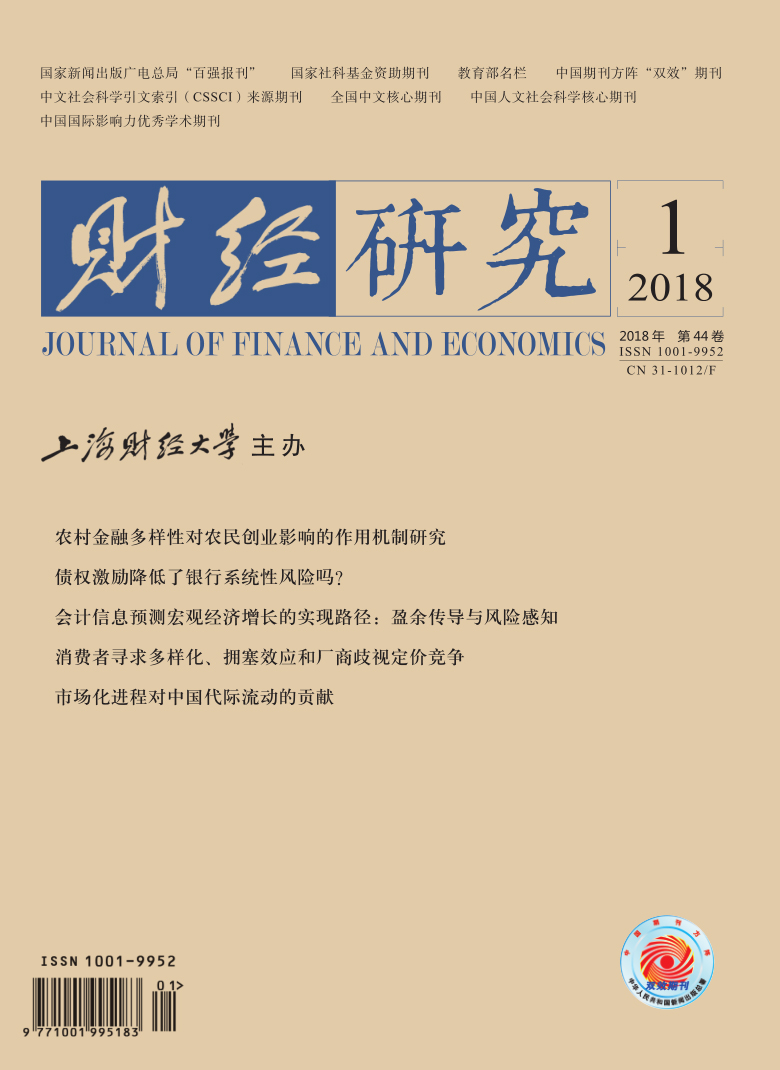我国公司股权相对集中,股权激励方案的设计和实施容易受到控股股东的影响。鉴于此,文章基于股权激励的行为引导效应和信号传递效应,以2009−2015年推行股权激励的上市公司为研究对象,剖析了在不同性质控股股东的调节作用下,股权激励的实施对信贷契约选择的不同影响。基于倾向得分匹配法和双重差分模型的分析结果表明:第一,国有控股公司的股权激励容易诱发管理层对信贷资金(特别是长期信贷资金)的偏好,而政府干预所形成的预算软约束使银行只能通过提高利率进行自我保护。第二,非国有控股股东对股权激励效应的调节作用与其现金流权和控制权分离情况密切相关。当两权匹配时,股权激励能够缓解管理层代理问题,此时银行预期债务企业的内部治理水平提升,从而公司可获得宽松的信贷契约;而当两权分离时,股权激励容易产生合谋效应,此时银行预期债务企业的内部治理水平降低,进而提出更加严苛的信贷契约条件。文章拓展了股权激励治理效应的研究,而且对于完善公司治理机制、有效实施股权激励计划具有重要参考价值。
股权激励、控股股东性质与信贷契约选择
摘要
参考文献
4 陈仕华, 李维安. 中国上市公司股票期权: 大股东的一个合法性" 赎买”工具[J]. 经济管理, 2012, (3): 50—59.
9 刘星, 付强, 郝颖. 终极控制人代理、两权分离模式与控制权私利[J]. 系统工程理论与实践, 2015, (1): 75—85. DOI:10.12011/1000-6788(2015)1-75
11 陆正飞, 何捷, 窦欢. 谁更过度负债: 国有还是非国有企业? [J]. 经济研究, 2015, (12): 54—67. DOI:10.3969/j.issn.1005-913X.2015.12.025
15 严也舟. 外部治理环境、内部治理结构与合谋侵占实证分析[J]. 管理评论, 2012, (4): 28—35.
20 Bae K H, Goyal V K. Creditor rights, enforcement, and bank loans[J]. Journal of Finance, 2009, 64(2): 823—860. DOI:10.1111/j.1540-6261.2009.01450.x
21 Bebehuk L, Fried J. How to tie equity compensation to long-term results[J]. Journal of Applied Corporate Finance, 2010, 22(l): 99—107. DOI:10.1111/jacf.2010.22.issue-1
22 Cheung Y, Rau R, Stouraitis A. Tunneling, propping, and expropriation: Evidence from connected party transactions in Hong Kong[J]. Journal of Financial Economics, 2006, 82(2): 343—386. DOI:10.1016/j.jfineco.2004.08.012
23 Coles J L, Daniel N D, Naveen L. Managerial incentives and risk-taking[J]. Journal of Financial Economics, 2006, 79(2): 431—468. DOI:10.1016/j.jfineco.2004.09.004
25 Garvey G T, Mawani A. Risk-taking incentives of executive stock options and the asset substitution problem[J]. Accounting & Finance, 2005, 45(1): 3—23.
26 Ge W X, Kim J B, Song B Y. Internal governance, legal institutions and bank loan contracting around the world[J]. Journal of Corporate Finance, 2012, 18(3): 413—432. DOI:10.1016/j.jcorpfin.2012.01.006
27 Gong J J, Li S. CEO incentives and earnings prediction[J]. Review of Quantitative Finance and Accounting, 2013, 40(4): 647—674. DOI:10.1007/s11156-012-0291-2
28 Hackbarth D, Miao J, Morellec E. Capital structure, credit risk, and macroeconomic conditions[J]. Journal of Financial Economics, 2006, 82(3): 519—550. DOI:10.1016/j.jfineco.2005.10.003
29 Harris M, Raviv A. The Theory of capital structure[J]. Journal of Finance, 1990, 4: 1297—1355. DOI:10.1111/j.1540-6261.1991.tb03753.x
30 Jenson M C, Meckling W H. Theory of firm: Managerial behavior agency cost and ownership structure [J]. Journal of Financial Economics, 1976, 3(4): 305—360. DOI:10.1016/0304-405X(76)90026-X
31 Kabir R, Li H, Vels-Merkoulova Y V. Executives compensation and the cost of debt[J]. Journal of Banking & Finance, 2013, 37(8): 2893—2907.
32 Kuang Y E, Qin B. Credit ratings and CEO risk-taking incentives[J]. Contemporary Accounting Research, 2013, 30(4): 1524—1559. DOI:10.1111/care.2013.30.issue-4
33 La Porta R, Lopez-de-Silanes F, Shleifer A, et al. Investor protection and corporate valuation[J]. Journal of Finance, 2002, 57(1): 1147—1170.
34 Marco C, Sabine K. Some practical guidance for the implementation of propensity score matching[J]. Journal of Economic Surveys, 2008, 22(1): 31—72. DOI:10.1111/joes.2008.22.issue-1
35 Matolcsy Z, Riddell S, Wright A. Alternative explanations for the association between market values and stock-based compensation expenditure[J]. Journal of Contemporary Accounting and Economics, 2009, 5. DOI:10.1016/j.jcae.2009.09.001
36 Panousi V, Papanikolaou D. Investment, idiosyncratic risk, and ownership[J]. Journal of Finance, 2012, 67(3): 1113—1148. DOI:10.1111/j.1540-6261.2012.01743.x
37 Polk C, Sapienza P. The stock market and corporate investment[J]. Review of Financial Studies, 2009, 22(1): 187—217. DOI:10.1093/rfs/hhn030
38 Shaw K W. CEO incentives and the cost of debt[J]. Review of Quantitative Finance and Accounting, 2012, 38(3): 323—346. DOI:10.1007/s11156-011-0230-7
引用本文
杨慧辉, 汪建新, 郑月. 股权激励、控股股东性质与信贷契约选择[J]. 财经研究, 2018, 44(1): 75–86.
导出参考文献,格式为:
下一篇:市场化进程对中国代际流动的贡献





 9338
9338  9476
9476

